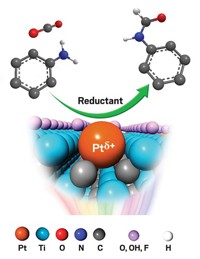Advertisement
Grab your lab coat. Let's get started
Welcome!
Welcome!
Create an account below to get 6 C&EN articles per month, receive newsletters and more - all free.
It seems this is your first time logging in online. Please enter the following information to continue.
As an ACS member you automatically get access to this site. All we need is few more details to create your reading experience.
Not you? Sign in with a different account.
Not you? Sign in with a different account.
ERROR 1
ERROR 1
ERROR 2
ERROR 2
ERROR 2
ERROR 2
ERROR 2
Password and Confirm password must match.
If you have an ACS member number, please enter it here so we can link this account to your membership. (optional)
ERROR 2
ACS values your privacy. By submitting your information, you are gaining access to C&EN and subscribing to our weekly newsletter. We use the information you provide to make your reading experience better, and we will never sell your data to third party members.
Synthesis
Tailoring More Active Titania Photocatalysts
February 4, 2008
| A version of this story appeared in
Volume 86, Issue 5
By customizing the surface structure of titanium dioxide particles, researchers at Dalian Institute of Chemical Physics, in China, have significantly boosted the semiconductor's catalytic activity in photochemical water-splitting reactions (Angew. Chem. Int. Ed., DOI: 10.1002/anie.200704788). Titanium dioxide is a relatively inexpensive, nontoxic photocatalyst that, in addition to splitting water to make hydrogen, can decompose organic materials and is used for its sterilizing and antifouling properties in coatings, windows, and other products. To probe the relationship between TiO2's catalytic activity and its anatase and rutile crystalline forms, Can Li and coworkers used wet chemical methods and heat treatments to prepare a series of samples in which they varied the relative amounts of the two forms. Judging by the quantity of hydrogen produced via the water-splitting reaction, they found that the best samples, which were four times more active than the pure rutile form, were composed of large rutile particles (500 nm) covered with tiny anatase crystallites (<30 nm). The team proposes that the interfaces between the two crystalline forms serve as catalytic hot spots that boost activity.



Join the conversation
Contact the reporter
Submit a Letter to the Editor for publication
Engage with us on Twitter